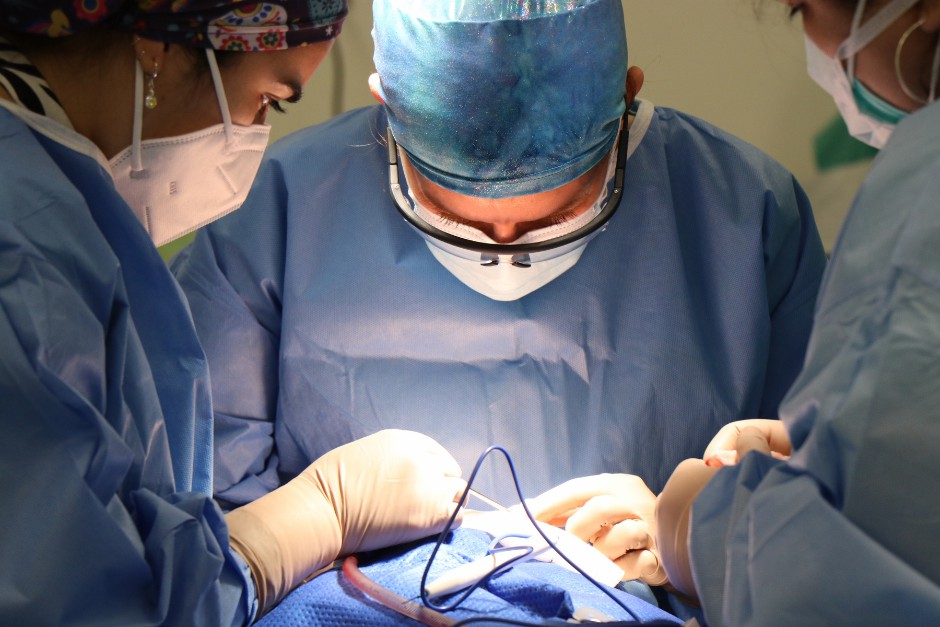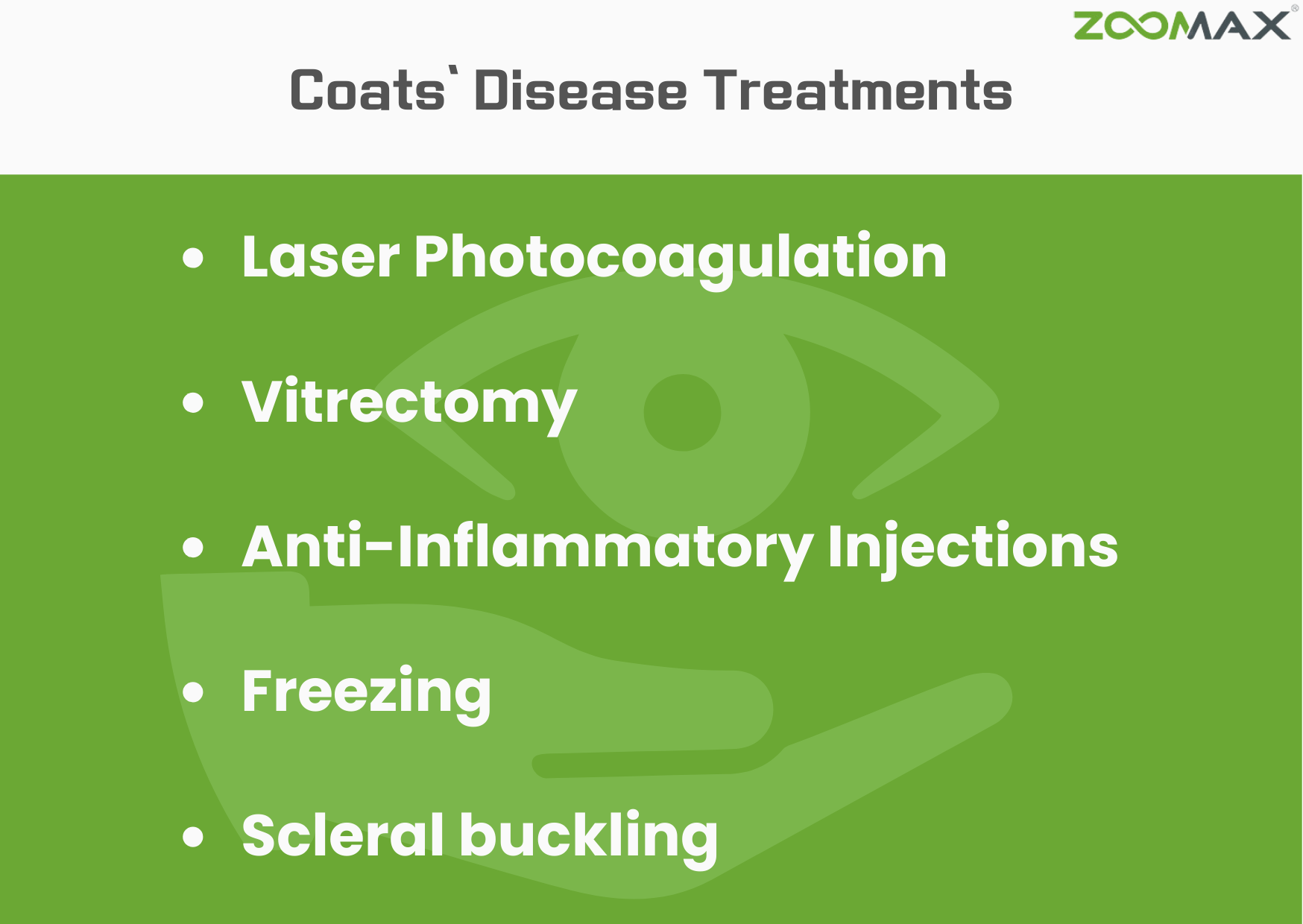Coats’ Disease, as a rare ocular vascular disorder, may not be a term familiar to many. However, behind this seemingly obscure name lies a significant challenge to eye health. While not as widely recognized as some more common ocular issues, the potential threat it poses to vision cannot be underestimated.
In this article, we will delve into the fundamental causes of Coats’ Disease, its common symptoms, and viable treatment options, aiming to provide readers with a comprehensive understanding.
What Is Coats’ Disease?
There are many rare diseases that can have a lasting impact on our lives should we be unfortunate enough to contract any of them. Coats disease is one of these, a rare eye disease that affects the retina. It manifests as a problem with blood vessels, causing the capillaries to enlarge and twist, leading to leaks and ultimately starving the retina of blood flow and oxygen.
 While research has established that it is not a hereditary problem, the reason people develop Coats’ disease symptoms remains largely unknown. Medical teams researching this rare eye disease are focused on the NDP gene, and suspect that it is a It is extremely rare, with less than 200,000 cases in the US, with the numbers showing that it is more likely to affect males than females. Coats’ disease risk factors mean that anyone has a 0.06% chance of contracting the disease, making it an exceptionally rare eye disease.
While research has established that it is not a hereditary problem, the reason people develop Coats’ disease symptoms remains largely unknown. Medical teams researching this rare eye disease are focused on the NDP gene, and suspect that it is a It is extremely rare, with less than 200,000 cases in the US, with the numbers showing that it is more likely to affect males than females. Coats’ disease risk factors mean that anyone has a 0.06% chance of contracting the disease, making it an exceptionally rare eye disease.
It is usually diagnosed before the age of 20, and most frequently before the age of 10, although there is a milder form of the disease that can manifest in older adults.
What are the Symptoms of Coats’ Disease?
However small the risk though, it is important to know what rare issues like this look like, so you can seek medical help with proper diagnosis from medical professionals. With Coats’ disease the problem is that for much of its early development, there are no outward signs that there are any issues. The eye appears normal, it doesn’t hurt or show signs of redness.
There is one area where it can show up, although it is not completely reliable. Using flash photography, you often see eyes show up as red in photographs, but for children with Coats’ disease eye color will be different. Rather than red, they can show up as white or pale yellow instead.
 However, most cases are identified in general eye testing for vision problems in children. In many areas this is standardized in schools and highlights the importance of eye health tests for children as they grow. The disease tends to appear only in one eye, although there are cases where both eyes can be affected.
However, most cases are identified in general eye testing for vision problems in children. In many areas this is standardized in schools and highlights the importance of eye health tests for children as they grow. The disease tends to appear only in one eye, although there are cases where both eyes can be affected.
Diagnosis is usually confirmed by a number of procedures, including ultrasound scans of the retina, and fluorescein angiography, which uses a contrast dye and photography of the retina to better examine the retina’s capillaries.
As it progresses, Coats’ disease symptoms include:
- Lower visual acuity in one eye
- Problems with depth perception – Poorer vision in one eye leads to issues with depth perception
- White or yellow pupil reflections – This is known as Leukocoria
- Amblyopia – Also known as lazy eye
- Strabismus – You might know this better as crossed eyes, when the eyes are unable to work cohesively together

The onset of any of these symptoms in children can signify they have a problem with Coats’ disease¸ however it will still require testing to confirm. That is why regular vision tests are so important for children. Additionally, around 1 in 10 children who have Coats’ disease eye problems are asymptomatic for extended periods, meaning the disease is developing without any external signs. This can lead to worse Coats’ disease symptoms in the end, so it is important to test any child’s vision so it can be spotted early.
The Coats’ disease symptoms most commonly manifest in five stages, the first stage is leaking capillaries but no visible change to the retina. Second stage is where we see the first effects on vision as leaking causes pressure build up in the affected eye. The third stage is where pressure builds significantly and can often cause the retina to detach slightly, leading to more severe vision loss. AT the fourth stage, the damage is causing glaucoma, damaging the optic nerve, while the retina will detach completely, leading to severe vision loss.
In the final fifth stage, if left unchecked, the disease can lead to complete vision loss in the affected eye.
How to Treat Coats’ Disease?
There is no specific cure for Coats’ disease, but there are ways to combat the effects. Early diagnosis can have a dramatic impact on outcomes here, and through a combination of treatments, around 75% of sufferers can expect to see improvements thanks to treatment, with around 25% suffering a continued decline in vision quality. The sooner the treatment starts the better, so again, vision health checks are crucial for children.

Treatments available include:
Laser Photocoagulation
This Coats’ disease treatment uses a laser to shrink or destroy the effected capillaries within the retina.
Vitrectomy
A surgical procedure that is used to remove the vitreous, a gel-like fluid layer that sits between the lens and the retina. This can be useful in cases of Coats’ disease as it relieves the pressure build up caused by capillary leakage.
Anti-Inflammatory Injections
These injections are directly into the eye, and require a local anesthetic. This process can also include anti–vascular endothelial growth factor medication, with both injection types designed to reduce the capillary swelling and reduce the fluid leakage.
Freezing
Often called cryotherapy, it creates a freezing temperature around specific points, and is used to target the affected retinal capillaries. This process creates scars that block the fluid flow, reducing or even eliminating the leaks and avoiding the pressure build up.
Scleral buckling
In cases where Coats’ disease has gone unchecked to stage four, and the patient has a detached retina, this surgery reattaches the retina to restore vision. Of course, this can only be done after other measures to prevent further leakage and continued vision loss.
 As we can see, Coats’ disease treatment can help, but as we all know, prevention is better than cure. So, what can you do to avoid Coats’ disease? Very little. While we don’t know exactly what causes it, it is likely a genetic error and something that happens at random. Coats’ disease remains extremely rare though, and there are things we can do. Testing children’s vision at an early age is important, not just for this rare eye disease, but for a number of vision health issues. Early diagnosis can help improve treatment outcomes too.
As we can see, Coats’ disease treatment can help, but as we all know, prevention is better than cure. So, what can you do to avoid Coats’ disease? Very little. While we don’t know exactly what causes it, it is likely a genetic error and something that happens at random. Coats’ disease remains extremely rare though, and there are things we can do. Testing children’s vision at an early age is important, not just for this rare eye disease, but for a number of vision health issues. Early diagnosis can help improve treatment outcomes too.
Aside from that, if a child displays any of the symptoms associated with this eye disease, see an eye doctor as soon as you can. A comprehensive eye exam will be able to identify if there is something to be concerned about and establish a treatment regime quickly.
However, for those who do suffer from this rare eye disease, living with vision loss may be something they have to adapt to. As with any other cause of vision loss, support of family and friends along with guidance from vision loss groups is invaluable here.
In addition, there are a number of low vision aids that can help maintain independence. One crucial and easy to use option here is portable magnifiers like the Zoomax Luna range, which offers instant magnification of menus, signs and so on in a compact package. This kind of independent living aid helps with dealing with partial vision loss and makes the situation easier to manage, giving the individual more confidence when out and about.
 Coats’ disease is an extremely rare eye disease that can have a significant impact on vision health. Believed to be a genetic error, rather than something inherited, there is little we can do to avoid it, however with just 200,000 people in the US having the disease, the chances of experiencing it are very low.
Coats’ disease is an extremely rare eye disease that can have a significant impact on vision health. Believed to be a genetic error, rather than something inherited, there is little we can do to avoid it, however with just 200,000 people in the US having the disease, the chances of experiencing it are very low.
That doesn’t mean we should ignore it though, and diligence with vision problems in children helps with early diagnosis, and with it the best chance of positive outcomes. Thanks to modern independent living aid technology such as Zoomax handheld magnifiers, those who do contract Coats’ disease or suffer vision loss for any reason can still live independent lives with confidence.
References
https://eyewiki.aao.org/Coats_Disease
https://www.allaboutvision.com/conditions/retina/coats-disease/
https://rarediseases.org/rare-diseases/coats-disease/
https://www.aapos.org/glossary/coats-disease

